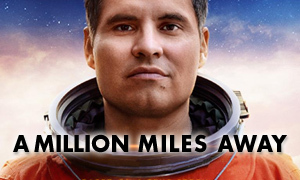Oppenheimer: History vs. Hollywood
Cillian Murphy
Born: May 25, 1976
Birthplace:
Douglas, Cork, Ireland
J. Robert Oppenheimer
Born: April 22, 1904
Birthplace: New York City, New York, USA
Death: February 18, 1967, Princeton, New Jersey, USA (throat cancer)
Bio: Director of the Los Alamos Laboratory and dubbed the "Father of the Atomic Bomb"
Emily Blunt
Born: February 23, 1983
Birthplace:
Roehampton, London, England, UK
Katherine "Kitty" Oppenheimer
Born: August 8, 1910
Birthplace: Recklinghausen, Westphalia, Prussia, Germany
Death: October 27, 1972, Panama City, Panama (embolism)
Bio: Oppenheimer's Wife | Member of Communist Party of America
Matt Damon
Born: October 8, 1970
Birthplace:
Boston, Massachusetts, USA
General Leslie Groves Jr.
Born: August 17, 1896
Birthplace: Albany, New York, USA
Death: July 13, 1970, Washington, D.C., USA (heart attack)
Bio: Manhattan Project Director
Robert Downey Jr.
Born: April 4, 1965
Birthplace:
New York City, New York, USA
Lewis Strauss
Born: January 31, 1896
Birthplace: Charleston, West Virginia, USA
Death: January 21, 1974, Brandy Station, Virginia, USA (lymphosarcoma)
Bio: Atomic Energy Commission Chairman | Adversary of Oppenheimer
Florence Pugh
Born: January 3, 1996
Birthplace:
Oxford, England, UK
Jean Tatlock
Born: February 21, 1914
Birthplace: Ann Arbor, Michigan, USA
Death: January 4, 1944, San Francisco, California, USA (suicide)
Oppenheimer's Girlfriend | Member of Communist Party of America
Kenneth Branagh
Born: December 10, 1960
Birthplace:
Belfast, Northern Ireland, UK
Niels Bohr
Born: October 7, 1885
Birthplace: Copenhagen, Denmark
Death: November 18, 1962, Copenhagen, Denmark (heart failure)
Bio: Danish Physicist who Provided Valuable Input During the Creation of the Atomic Bomb
Josh Peck
Born: November 10, 1986
Birthplace:
New York City, New York, USA
Kenneth Bainbridge
Born: July 27, 1904
Birthplace: Cooperstown, New York, USA
Death: July 14, 1996, Lexington, Massachusetts, USA
Bio: Harvard Physicist and Director of the Manhattan Project's Trinity Nuclear Test
Jack Quaid
Born: April 24, 1992
Birthplace:
Los Angeles, California, USA
Richard Feynman
Born: May 11, 1918
Birthplace: New York City, New York, USA
Death: February 15, 1988, Los Angeles, California, USA (complications from liposarcoma)
Bio: Theoretical Physicist who Worked on the Manhattan Project
Josh Hartnett
Born: July 21, 1978
Birthplace:
St. Paul, Minnesota, USA
Ernest Lawrence
Born: August 8, 1901
Birthplace: Canton, South Dakota, USA
Death: August 27, 1958, Palo Alto, California, USA (ulcerative colitis)
Bio: Worked on Uranium-Isotope Separation for Manhattan Project
Benny Safdie
Born: February 24, 1986
Birthplace:
New York City, New York, USA
Edward Teller
Born: January 15, 1908
Birthplace: Budapest, Austria-Hungary
Death: September 9, 2003, Stanford, California, USA (stroke)
Bio: Theoretical Physicist who is Known Colloquially as the "Father of the Hydrogen Bomb"
Rami Malek
Born: May 12, 1981
Birthplace:
Los Angeles, California, USA
David L. Hill
Born: November 11, 1919
Birthplace: Booneville, Mississippi, USA
Death: December 14, 2008, Rochester, New York, USA (natural causes)
Bio: Associate Experimental Physicist at Chicago's Met Lab during the Manhattan Project
Gary Oldman
Born: March 21, 1958
Birthplace:
London, England, UK
Harry S. Truman
Born: May 8, 1884
Birthplace: Lamar, Missouri, USA
Death: December 26, 1972, Kansas City, Missouri, USA (pneumonia)
Bio: 33rd President of the United States
Tom Conti
Born: November 22, 1941
Birthplace:
Paisley, Scotland, UK
Albert Einstein
Born: March 14, 1879
Birthplace: Ulm, Kingdom of Württemberg, German Empire
Death: April 18, 1955, Princeton, New Jersey, USA (internal bleeding caused by rupture of an abdominal aortic aneurysm)
Did J. Robert Oppenheimer leave a poison apple on his tutor's desk?
The Oppenheimer true story reveals that as a young graduate student at Cambridge, Oppenheimer grew depressed with lab work, which he described as "a terrible bore." He was clumsy and was more suited for theoretical physics than experimental. In a letter to a friend, he said that he was so bad at lab work that it was impossible to feel that he was learning anything. His tutor, future Nobel Prize-winning physicist Patrick Blackett, was extremely demanding and pushed him to spend more time in the lab. The two developed an antagonistic relationship.
Oppenheimer's friend, Francis Fergusson, said that Oppenheimer told him that he had left an apple laced with toxic chemicals on Blackett's desk. Fortunately, Blackett didn't eat the apple. It's unknown exactly what chemical(s) Oppenheimer might have used to contaminate the apple, though Fergusson said "he had actually used cyanide or something somewhere." The movie treats Fergusson's speculative statement as fact and depicts it as being the lethal chemical potassium cyanide. However, the book American Prometheus, which was the basis for the movie, reasons that the chemical was more likely something that would have just made Blackett sick. This is because the reaction by authorities to the incident wasn't in line with attempted murder. The movie attempts to heighten the drama by having Oppenheimer change his mind and return to the lab to retrieve the apple, only to find one of his idols, Niels Bohr, holding it. He swipes the apple before Bohr can take a bite, averting a catastrophe. The moment never happened in real life.
The event did land Oppenheimer in hot water with the university. However, as a result of their wealth and influence, Oppenheimer's parents were able to convince the Cambridge authorities not to expel him or levy criminal charges against him. Instead, Oppenheimer was put on probation and attended routine sessions with a psychiatrist.
Is Oppenheimer based on a book?
Yes. To create his Oppenheimer screenplay, Christopher Nolan adapted Kai Bird and Martin J. Sherwin's Pulitzer Prize-winning 2005 book American Prometheus: The Triumph and Tragedy of J. Robert Oppenheimer. The book tells the story of American physicist J. Robert Oppenheimer, who headed the Manhattan Project that developed the atomic bomb. Lauded for its historical accuracy, the 721-page book took 25 years to write and involved an enormous amount of research (The New York Times).
After attending a screening, Kai Bird praised the film, telling The New York Times that his coauthor, Marty Sherwin, who passed away from cancer in October 2021, "would have been deeply pleased" by Oppenheimer's historical accuracy. Bird and his wife had even spent a few hours on the film's Los Alamos set.
"I am, at the moment, stunned and emotionally recovering from having seen it," said Bird after the screening. "I think it is going to be a stunning artistic achievement, and I have hopes it will actually stimulate a national, even global conversation about the issues that Oppenheimer was desperate to speak out about — about how to live in the atomic age, how to live with the bomb and about McCarthyism — what it means to be a patriot, and what is the role for a scientist in a society drenched with technology and science, to speak out about public issues" (Leon Center for Biography).
Did Albert Einstein encourage the U.S. to develop a nuclear weapon?
Yes. An Oppenheimer fact-check reveals that German-born theoretical physicist Albert Einstein signed a letter dubbed the Einstein-Szilard letter on August 2, 1939. Authored by physicist Leo Szilard, the letter was sent to President Franklin D. Roosevelt, recommending that he provide funding for research into the potential for using nuclear fission as a weapon. The letter warned that Nazi Germany may be carrying out similar research into the development of nuclear weapons.
Why was the program to create the atomic bomb called the Manhattan Project?
The United States research and development program to create the first nuclear weapons was called the "Manhattan Project" because the Army component of the program originated in the Manhattan Engineering District of the War Department, which was headquartered in the New York City borough of Manhattan.
Why was Los Alamos chosen for the Manhattan Project?
The scientific director of the Manhattan Project, Robert Oppenheimer, and the military head of the project, General Leslie Groves, were seeking a secluded yet accessible location with a moderate climate, abundant water supply, and a nearby labor force. Los Alamos, New Mexico was the idea of Percival C. Keith, a member of the planning board for the U.S. government's Office of Scientific Research and Development. Keith was familiar with the area because his two children attended the Los Alamos Ranch School, a summer camp. Oppenheimer was also aware of the location due to the fact he had a ranch in the nearby Sangre de Cristo Mountains. Los Alamos sits on the Pajarito Plateau and is encompassed by pine trees and mountains.
Did Christopher Nolan recreate the town of Los Alamos?
Yes. Similar to how James Cameron recreated the ship for Titanic or how Steven Spielberg rebuilt entire areas for Saving Private Ryan, director Christopher Nolan reconstructed the town of Los Alamos, which gave the actors carte blanche to go wherever they needed to go to get the best shot. "Chris had the flexibility to shoot as he wanted and needed to all around the town," Matt Damon told Vanity Fair. "It was fully immersive." Damon also said that Nolan is "so exacting" when it came to his preparation for the film and called the level of detail "really exquisite." Nolan even filmed inside some of the historic Manhattan Project buildings, including the home where Oppenheimer and his wife Kitty lived with their two children.
The town was built not far from the original Los Alamos. "You could see over the horizon the actual testing site and where the original town was," said Damon.
Did J. Robert Oppenheimer have an affair with Communist Party member Jean Tatlock?
In researching the Oppenheimer true story, we learned that in real life, Jean Tatlock and J. Robert Oppenheimer began dating in 1936 and were involved in an intense relationship for roughly three years, with Tatlock breaking things off in 1939, well before the start of the Manhattan Project in 1942. While Oppenheimer showed an interest in Communism, he never joined the party and instead positioned himself on the periphery of political entanglements. Tatlock had unsuccessfully tried to encourage him to take action. Oppenheimer married Katherine "Kitty" Puening, a former Communist Party member, in 1940.
The film depicts Oppenheimer and Tatlock as close friends and occasional lovers in the years following their breakup, drawing from Kai Bird and Martin J. Sherwin's 2005 book American Prometheus. However, the assertion that Oppenheimer carried on an extramarital affair with Tatlock while he was working on the Manhattan Project is disputed by historians. They do agree that he met with Tatlock at least once, visiting her in California in June 1943 and spending the night in her apartment. This is known because Army security agents followed Oppenheimer during the trip (Robert Oppenheimer: A Life Inside the Center). Tatlock was suffering from depression at the time and committed suicide early the following year on January 4, 1944 by drowning herself in her bathtub. Her death is said to have affected Oppenheimer deeply.
In answering the question, "Is Oppenheimer accurate?" we discovered that the most noticeable inaccuracy in the movie when it comes to their relationship is that in real life, J. Robert Oppenheimer and Jean Tatlock were 10 years apart in age, having met when they were 32 and 22, respectively. The age gap between actors Cillian Murphy and Florence Pugh is almost 20 years. Murphy turned 46 around the time filming wrapped in May 2022 and Pugh was 26.
Does the Oppenheimer movie include a lot of CGI?
No. Director Christopher Nolan told Collider that Oppenheimer has "zero" CGI shots. This includes the bomb tests, which were recreated without CGI (Computer-Generated Imagery). "I think computer graphics, they're very versatile, they can do all kinds of things, but they tend to feel a bit safe," said Nolan. "That's why they're difficult to use in horror movies. Animation tends to feel a little safe for the audience. The Trinity Test, ultimately, but also these early imaginings of Oppenheimer visualizing the Quantum Realm, they had to be threatening in some way. They had to have the bite of real-world imagery. The Trinity Test, for those who were there, was the most beautiful and terrifying thing simultaneously, and that's where we were headed with this film." Last year, Top Gun: Maverick took a similar approach and it paid off (although a limited amount of CGI was used in the Tom Cruise blockbuster).
Did expert scientists worry that an atomic explosion could set fire to the atmosphere and destroy all life on Earth?
Yes. In the Oppenheimer movie, Cillian Murphy's character tells General Leslie Groves (Matt Damon) that the chances that setting off a nuclear bomb will destroy the world are "near zero." While exploring the Oppenheimer fact vs. fiction, we discovered that it's true that J. Robert Oppenheimer considered what he referred to as the "terrible possibility" that a nuclear weapon could set the atmosphere and oceans on fire, destroying all life on Earth. The question was whether a nuclear fission bomb would create temperatures so intense that it would cause the hydrogen atoms in the air and water to fuse together into helium, similar to the sun, sparking a runaway reaction that would eventually engulf the Earth, turning it into a miniature star. Multiple respected scientists expressed this fear, including Hungarian-American physicist Edward Teller, who is now known as "the father of the hydrogen bomb." -Real Clear Science
There was enough of a concern that a nuclear bomb might destroy the planet that multiple scientists were assigned to work on the relevant calculations, including Edward Teller and Emil Konopinski. In the end, their calculations determined that it would be "incredibly impossible" to set the atmosphere ablaze with a nuclear weapon. A nuclear bomb could not achieve the temperatures and conditions to light the atmosphere on fire. Their report, titled "Ignition of the Atmosphere With Nuclear Bombs," stated in part:
It is shown that, whatever the temperature to which a section of the atmosphere may be heated, no self-propagating chain of nuclear reactions is likely to be started. The energy losses to radiation always overcompensate the gains due to the reactions.
Given that there have been more than 2,000 nuclear detonations around the world as of 2023, Teller and Konopinski's findings appear to be correct. -Arms Control Association
Did Christopher Nolan detonate an atomic bomb on the set of Oppenheimer?
While that answer should be obvious, some fans have falsely assumed that director Christopher Nolan set off an actual atomic bomb for the film. Nolan told the Hollywood Reporter that while he did not use CGI for the Trinity Test scene, he also did not detonate an atomic bomb to get the shot. "It's flattering that people would think I would be capable of something as extreme as that on the one hand, but it's also a little bit scary," said Nolan. Instead, the explosion was recreated using miniatures that special effects supervisor Scott R. Fisher called "big-atures" due to the fact that they tried to make the models as big as possible. The explosion itself was recreated on a specially built set. Magnesium, gasoline, propane, and aluminum powder were used to recreate the blast.
Pictured below is the only well-exposed color photograph of the Trinity Test blast. The photo was taken by environmental physicist Jack Aeby. Like in the movie, physicist Edward Teller put on sunscreen and dark glasses to watch the explosion. Young physicist Richard Feynman did opt to not put on protective glasses because he felt the windshield of the truck he was in would provide enough protection. -USA Today
Did anyone die while working on the Manhattan Project?
Yes. While researching Oppenheimer's historical accuracy, we learned that two fatal accidents occurred during the roughly three years that scientists worked on the Manhattan Project at Los Alamos. Both accidents happened while scientists were conducting neutron reflection experiments to determine critical mass. These experiments were referred to as "Tickling the Tail of the Dragon" due to their inherent danger. The first fatal accident happened on August 21, 1945 when a Manhattan Project physicist named Harry Daghlian accidentally dropped a tungsten carbide brick on the plutonium mass, which gave off a massive blast of neutron radiation. He further exposed himself to additional gamma radiation as he disassembled the pile. Daghlian succumbed to acute radiation poisoning 25 days later at the hospital in Los Alamos.
The second fatal accident at the Los Alamos site unfolded on May 21, 1946. Physicist Louis Slotin was using the same 6.2-kilogram plutonium core that took Daghlian's life the year prior. Slotin was executing a criticality experiment that consisted of slowly bringing together two neutron-reflecting beryllium-coated halves of a sphere around the plutonium core. The rate of fissioning would be measured as the two halves were brought closer together without touching. However, Louis Slotin's screwdriver slipped, causing the halves to come together. He was exposed to nearly 1,000 rads of radiation (well past a fatal dose). Instinctively, he knocked the spheres apart, saving the lives of the seven other observers in the room. Louis Slotin died nine days later on May 30, 1946 after enduring the devastating effects of radiation sickness. The plutonium core involved in both deaths was subsequently nicknamed the "Demon Core". -AtomicHeritage.org
Why are some scenes in Oppenheimer black-and-white?
In an interview with Total Film magazine, director Christopher Nolan explained that the shifts from color scenes to black-and-white has to do with some scenes being subjective and others being objective:
I wrote the script in the first person, which I'd never done before. I don't know if anyone has ever done that, or if that's a thing people do or not… The film is objective and subjective. The color scenes are subjective; the black-and-white scenes are objective. I wrote the color scenes from the first person. So for an actor reading that, in some ways, I think it'd be quite daunting.
How long after the Trinity Test were the atomic bombs dropped on Hiroshima and Nagasaki?
Nicknamed "Little Boy" and "Fat Man", the bombs that the United States dropped on Hiroshima and Nagasaki were unleashed just three weeks after the Trinity Test, which was conducted on July 16, 1945. "Little Boy", an enriched uranium gun-type fission weapon, was dropped on Hiroshima on August 6, 1945. "Fat Man", a plutonium implosion-type nuclear weapon", was dropped on Nagasaki three days later on August 9, 1945. Neither bombing is depicted in the movie. While conducting our Oppenheimer fact-check, we learned that during the following two to four months after the bombs were dropped, their effects took the lives of 90,000 to 146,000 people in Hiroshima and 60,000 to 80,000 people in Nagasaki. Roughly half of the deaths occurred on the first day. The remaining deaths were the result of injuries, burns, and radiation sickness, made worse by malnutrition and illness.
The majority of the deaths in Hiroshima and Nagasaki were civilians. Hiroshima had a rather large military garrison, which accounted for an estimated 20,000 deaths, or roughly one-fifth of the total. In Nagasaki, just 150+ soldiers were killed. Nagasaki was chosen because it was a major military port, shipbuilding center, and an important manufacturer of naval ordnance.
Did Christopher Nolan cast real scientists as extras in Oppenheimer?
Yes. To add to Oppenheimer's historical accuracy, Christopher Nolan cast real-world scientists with a thorough understanding of nuclear weapons to portray some of the extras in the film.
We were in the real Los Alamos and we had a lot of real scientists as extras. We needed the crowd of extras to give reactions, and improvise, and we were getting sort of impromptu, very educated speeches. It was really fun to listen to. You've been on sets where you've got a lot of extras around and they're more or less thinking about lunch. These guys were thinking about the geopolitical implications of nuclear arms and knew a lot about it. It actually was a great reminder every day of: We have to be really on our game, we have to be faithful to the history here, and really know what we're up to.
Did Robert Oppenheimer and Albert Einstein have conversations at Princeton about the atomic bomb?
It's true that both men were employed by Princeton University in the 1940s. They even had offices down the hall from each other. Einstein was a physics professor and Oppenheimer was the director of the university's Institute for Advanced Study. "I'm sure they took walks together by that pond," says Kai Bird, co-author of American Prometheus. However, Bird emphasized that their two conversations in the movie are fictional and were imagined by Christopher Nolan. -USA Today
Was J. Robert Oppenheimer stripped of his security clearance due to his Communist ties?
Yes. The controversial Oppenheimer security hearing at the heart of both the movie and the book on which it is based took place in 1954 toward the end of McCarthyism, a campaign that targeted suspected Communists and Communist sympathizers. Oppenheimer's hearing was conducted by the United States Atomic Energy Commission (AEC).
The Oppenheimer true story confirms that during the four-week-long hearing, Oppenheimer was probed for his ties to Communism that dated back to the 1930s when he belonged to a number of Communist front organizations. It was around that time that he was involved in an intense three-year romance with Jean Tatlock (portrayed by Florence Pugh in the movie), a member of the Communist Party of the United States of America. He then married Katherine "Kitty" Puening (played by Emily Blunt), a former Communist Party USA member. Many of Oppenheimer's friends were communists. Though his connections to communism were mainly through his associations and there was no proof at the time he had been disloyal to his country, the three judges at the hearing voted two to one to strip him of his Q clearance, which he'd received in 1947. The decision effectively ended his role in government and policymaking.
The movie portrays Oppenheimer as a victim of McCarthyism, but in reality, things weren't that simple. While there were many people unfairly targeted by McCarthyism, Oppenheimer had enough of a documented history with communism and Communist Party members that removing his security clearance was arguably a reasonable reaction, especially as tensions continued to escalate with the Soviet Union.
Did Oppenheimer first utter the quote "I am become Death, destroyer of worlds" during a moment of intimacy with his lover, Jean Tatlock?
No. In a 1965 NBC television documentary, Robert Oppenheimer famously quoted the verse from the Hindu scripture Bhagavad Gita. Oppenheimer was reflecting on the Trinity Test. He said that the verse came into his mind as he watched the test, which had unfolded two decades earlier and marked the first detonation of a nuclear device. In the movie, Oppenheimer (Cillian Murphy) is first heard uttering the verse during a moment of intimacy with Jean Tatlock (Florence Pugh), who hands him the Bhagavad Gita and asks him to read from it as they have intercourse. Not only is this moment in the film entirely fictional, it has drawn condemnation from the Indian government. In a letter addressed to Christopher Nolan on Twitter, India's information commissioner, Uday Mahurkar, called the scene featuring the revered scriptures a "scathing attack on Hinduism" and a "direct assault on [the] religious beliefs of a billion tolerant Hindus." He urged Nolan to remove the scene from the film.
After the war, did J. Robert Oppenheimer speak out against nuclear proliferation?
Yes. As seen in Christopher Nolan's Oppenheimer movie, he understood the dangers and world-ending potential of nuclear proliferation. After WWII, he petitioned for international regulations on nuclear power in an effort to avert a nuclear arms race with the Soviet Union. Oppenheimer also spoke out against the development of the hydrogen bomb, a second-generation nuclear weapon, later stating, "The issues became purely the military, the political and the humane problem of what you were going to do about it once you had it." The true story confirms that his positions on issues related to national defense, including the hydrogen bomb, put him at odds with certain U.S. government and military factions, which contributed to the government cutting ties with him after his security hearing in 1954.
The movie paints Oppenheimer as turning against nuclear weapons after WWII because he was so shaken by the destructive force of what he had been put in charge of creating. The other interpretation of Oppenheimer's postwar stance on the development of nuclear weapons is that he was perfectly fine using the bomb on Japan because the Soviet Union was in favor of it, but when the war was over, he didn't want the United States leaping way ahead of the Russians in terms of nuclear capability, which led him to try to stop the development of the hydrogen bomb. These suspicions were one reason why Lewis Strauss wanted to remove Oppenheimer's security clearance. It's impossible to definitively say one way or another as to his motivations for staunchly opposing the development of a second-generation bomb.







